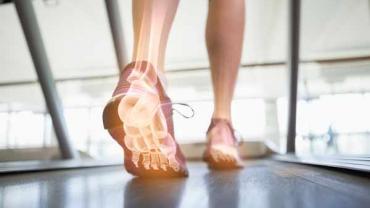
A past article provided an introduction to the compound geranylgeraniol (GG) and discussed the potential for GG to mitigate the adverse effects of statin drugs without interfering with their cholesterol-lowering properties. Statins aren’t the only drugs that induce side-effects that may be ameliorated by GG. This time let’s look at bisphosphonates and explore the potential role for GG.
Bisphosphonate drugs are used in the treatment of osteoporosis (including glucocorticoid-induced osteoporosis), Paget’s disease, osteogenesis imperfecta and other conditions involving high bone turnover. These drugs, like statins, exert their effects by inhibiting an enzyme in the mevalonate pathway. Whereas statins inhibit HMG-CoA reductase, nitrogen-containing bisphosphonates (NBPs) inhibit farnesyl pyrophosphate synthase. (We’ll focus on NBPs because non-nitrogen bisphosphonates work via a different mechanism.) Inhibition of this enzyme reduces the biosynthesis of isoprenoid compounds required for post-translational modification of compounds required for osteoclast activity, and this reduced osteoclast activity in turn results in decreased bone resorption.
While this may seem desirable on the surface, this mechanism of action is not without side-effects. These include acute phase reaction with transient fever, muscle pain, joint pain, headache, flu-like symptoms, and transient hypocalcemia or hypophosphatemia. A more severe side-effect is atypical femoral fracture, caused by “pathophysiological alterations of the bone quality and fracture repair process resulting in over-suppression of bone turnover.” Perhaps an even more severe potential side-effect from NBPs is osteonecrosis of the jaw (ONJ). These two side-effects are considered so serious that researchers recommend a two-year “drug holiday” after 5 – 10 years of NBP use.
Decreased synthesis of GG is believed to be the main factor leading to ONJ, so it shouldn’t be surprising that GG has been identified as a potential preventive and therapeutic agent. In cultured HUVEC cells incubated with an NBP, GG was shown to reverse the effects of NBPs on reduced angiogenesis, which is speculated to be one of many mechanisms contributing to ONJ. GG has also been shown to reverse the negative effects of NBPs in other types of human cells as well, including fibroblasts and osteogenic cells, alveolar osteoblasts, periodontal ligament fibroblasts and oral keratinocytes.
Bone Health, GG and Vitamin K2
Inhibition of enzymes in the mevalonate pathway may reduce endogenous synthesis of vitamin K2. This is ironic because vitamin K2 is instrumental in supporting bone mineralization. Vitamin K2-dependent enzymes play essential roles in calcium trafficking and a deficit of enzyme activity may contribute to reduced bone mineralization with concurrent vascular and soft tissue calcification—a phenomenon called the “calcium paradox.” Vitamin K2 appears to promote the transition of osteoblasts to osteocytes and may also limit the synthesis of osteoclasts—precisely something that may help a patient with osteoporosis.
Vitamin K1 accounts for over 90% of dietary vitamin K but K2 makes up over 90% of tissue vitamin K stores. Vitamin K2 can be obtained in the diet from aged cheese, fermented foods such as sauerkraut and natto (fermented soybean), and animal proteins and fats including egg yolks, beef, chicken and especially liver. (Additionally, small amounts of K1 are converted to K2 by intestinal bacteria.) Vitamin K2 is derived from K1 via enzymatic processes that appear to require protein modification through geranyl pyrophosphate and farnesyl pyrophosphate—the latter being the enzyme inhibited by nitrogen-containing bisphosphonates. This is a likely explanation for the reduced K2 synthesis seen with NBPs and also with statins.
According to a paper detailing bisphosphonates’ mechanism of action and role in clinical practice, “the optimal duration of bisphosphonate therapy for postmenopausal osteoporosis, and nearly all other conditions for which bisphosphonates are used, remains unclear.” With this in mind, adding GG to the supplement regimen of those being treated with NBPs may be helpful. Alternative or complementary strategies can also be considered for supporting bone health, such as increasing dietary protein, weightlifting, and supplementing with bone-supportive nutrients beyond calcium, such as boron, magnesium, zinc, manganese, copper, selenium and vitamin K2. The author of a paper in the Journal of Nutrition and Metabolism stated it clearly: “Vitamin K2 may be a useful adjunct for the treatment of osteoporosis, along with vitamin D and calcium, rivaling bisphosphonate therapy without toxicity.” (Emphasis added.)